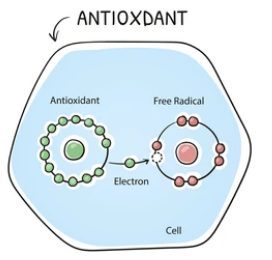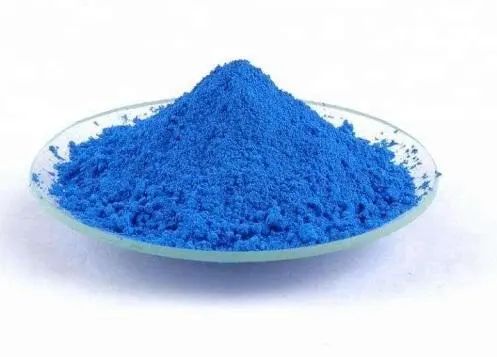Range of distribution of ergothioneine
Ergothioneine is distributed in some tissues and organs of mammals, mainly in red blood cells (about 1~2 mmol. L) and the semen of some animals, although there are no experimental studies showing that animals can synthesize the substance, there is certainly a pathway for the absorption and retention of ergothioneine in animal cells. In carnivores, ergothioneine in animal tissues can provide dietary needs. Melville.D.B and Eich. S found that ergothioneine was also present in cereal plants. Subsequent studies by Melville.D.B and Genghof.D.S et al. showed that ergothioneine is a common component of many microbial cells and can be synthesized in several fungi but not in bacteria. In edible mushrooms such as porcini mushrooms, mushrooms, and hairy ghost umbrellas, it can produce the precursor histidine trimethyl salt (hercynine) required for the synthesis of ergothioneine; Moreover, the hairy ghost umbrella can also produce rare amino acids such as ergothioneine.

Biological function
Antioxidant effectErgothioneine is a natural amino acid derived from plants and can accumulate in animals, studies have proved that it has the effect of antioxidants, it can effectively scavenge -OH, can chelate divalent iron ions and copper ions, prevent H2O2 from forming -OH under the action of iron ions or copper ions, and can also inhibit the oxidation of copper ion-dependent oxyhemoglobin and inhibit the peroxidation reaction of arachidonic acid after myoglobin (or hemoglobin) is mixed with H2O2. Ergothioneine also strongly removes hypochlorous acid, thereby preventing the inactivation of A1-antiprotease. However, it does not inhibit the peroxidation of lipid particles in the presence of iron ions. Akanmu D et al. have shown that the presence of ergothioneine in the body at a certain concentration can act as an antioxidant. Cell-Protective Ergothioneine is a powerful hypochlorous acid scavenger (HOCl), and while many compounds react with hypochlorous acid, few react as quickly as ergothioneine. A 1-antiprotease inhibitors (APIs), such as elastase, are particularly sensitive to hypochlorous acid, and physiological concentrations of ergothioneine are very effective in protecting the API against the inactivation caused by hypochlorous acid, since neutrophils are the main source of hypochlorous acid in the body, one of the functions of ergothioneine is to protect red blood cells from neutrophils from normal function or pathological sites of inflammation. Anti-inflammatory effectPeroxynitrite is an endogenous form of limited diffusion of NO and superoxide, and is a strong oxidant involved in the pathophysiology of inflammation, such as ischemia-reperfusion injury, atherosclerosis, acute pneumonia and sepsis. Ergothioneine inhibits peroxynitrosoanion-mediated oxidation of amino acids, such as tyrosine nitration, thus providing feasibility for the treatment of inflammation. Other Biological FunctionsSince the discovery of ergothioneine, many people have tried to elucidate its physiology, but none of them have been able to fully define its physiology. The Brummel.m.c study found that ergothioneine may also have the following functions: catalytic effect of cation transport and carbon dioxide carboxylation or decarboxylation, thyroid and antithyroid effect, histamine or antihistamine effect, cholinergoid function or antisympathetic physiological effect; It can regulate the reactivity of other acyl carriers or act as an acid support itself. Epand R M et al. also studied the effect of ergothioneine on diabetes. It has strong antioxidant activity: scavenging reactive oxygen species, chelating divalent metal ions, activating antioxidant enzymes, inhibiting superoxide dismutase, inhibiting the oxidation reaction of various heme proteins, etc. Due to these characteristics, ergothioneine has a wide range of uses and market prospects in the fields of medicine, food and beverage, functional food, animal feed, cosmetics and biotechnology. Metabolism studies have shown that ergothioneine cannot be synthesized in animals, but it has been clearly shown in plants and microorganisms that histidine, the sulfuratom, and the methyl groups of methionine can synthesize ergothioneine. D. Yanasugondha and M.D. Appleman studied the catabolism of ergothioneine in microorganisms, and they found that ergothioneine can be converted to trimethylamine and thiol imidazole acrylic acid; After feeding the rats with a diet containing [S]ergothioneine for up to 21 days, Heath found that the ergothioneine marked with [S] was distributed in the bone marrow, red blood cells, liver, kidneys, and other parts. George Wolf et al. first injected [α-S]ergothioneine into mice, and then studied the distribution of radioactive energy and its metabolites. It was proved that herzynine was a precursor for the synthesis of ergothioneine.
Applications
For the substance of ergothioneone because of its significant and unique biological function, scholars from all over the world have carried out research on its application for a long time, although it needs to be further deepened, but it has played a good role in its application in various fields. Ergothioneine has a wide range of uses and market prospects in the fields of organ transplantation, cell preservation, medicine, food and beverage, functional food, animal feed, cosmetics and biotechnology.
Used as a unique antioxidant
Ergothioneine is a highly protective, non-toxic natural antioxidant that is not easily oxidized in water, which allows them to reach concentrations of mmol in certain tissues and stimulates the cell’s natural antioxidant defense system. Among the many antioxidants, ergothioneine is particularly unique because ergothioneine can chelate heavy metal ions, which can protect the body’s red blood cells from free radical damage.
It is used in organ transplantation
The amount and duration of existing tissue preservation plays a decisive role in the success of organ transplant surgery. The most common antioxidant used in organ transplantation is glutathione, which is highly oxidized when exposed to the environment, and its antioxidant capacity is greatly reduced even in refrigerated or liquid environments, causing toxicity to cells and causing inflammation, inducing hydrolysis of tissue proteins. Ergothioneine is like an antioxidant that is stable in aqueous solution and can also chelate heavy metal ions, which can be used as a substitute for glutathione in the field of organ protection to better realize the protection of transplanted organs.
It is added to cosmetics as a skin protector
Ultraviolet rays in sunlight can penetrate into the dermis layer of human skin, affecting the growth of epidermal cells, causing surface cells to die of old age, causing premature skin aging, and ultraviolet UVB is more likely to lead to skin cancer. Ergothioneine can be added to some cosmetics as a skin protector to minimize the formation of reactive oxygen species and protect cells from radiation damage, so ergothioneine can be added to some cosmetics as a skin protector for the development of outdoor skin care products and protective cosmetics.
Application in ophthalmology
In recent years, ergothioneine has been found to play a key role in eye protection, so many researchers hope to develop an ophthalmic product to facilitate the development of ophthalmic treatments. Ophthalmic surgery is generally performed locally, and the water solubility and stability of ergothioneine provide the feasibility of performing this surgery and have great application value.
In other applications
Ergothioneine can be applied to many fields due to its excellent properties. For example, it is used in the field of medicine, food, health products, cosmetics, etc. In the field of medicine, it can be used to treat inflammation, etc., and can be made into tablets, capsules, oral preparations, etc.; In the field of health supplements, it can be used to prevent the occurrence of cancer, and can be made into functional foods, functional drinks and other products, and in the field of cosmetics, it can be used for anti-aging, and can be made into sunscreens and other products. With the enhancement of people’s awareness of health care, the excellent properties of ergothioneine as a natural antioxidant will gradually be widely recognized and applied.









